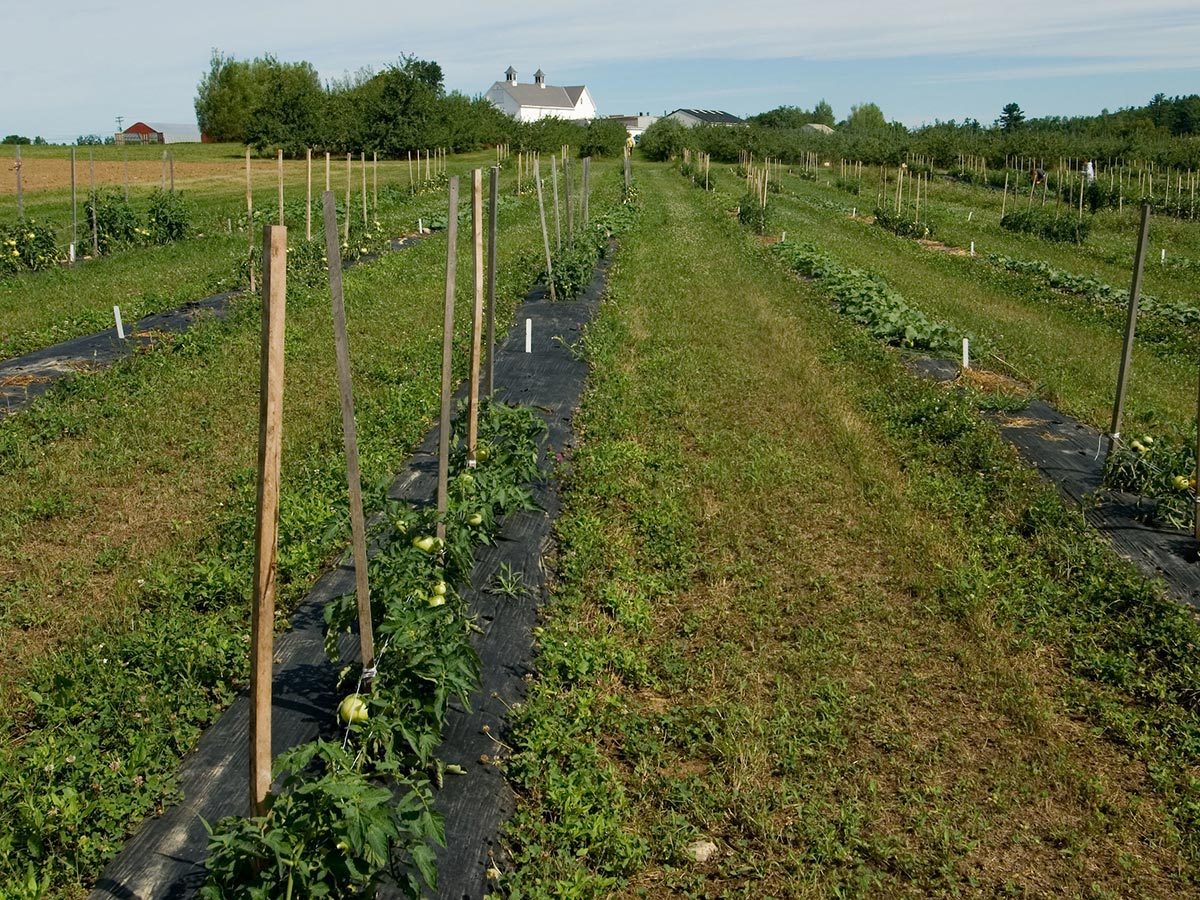
U.S. Census of Agriculture reveals increase in value of Maine farms and agricultural products
Orono, Maine — The United States Department of Agriculture recently released results of the 2022 Census of Agriculture, including state- and county-level statistics. The most recent data for Maine show that farms continue to be a driver of economic activity, especially in rural communities. Agricultural land and buildings are worth more than ever before. The estimated market value of land and buildings for the average Maine farm rose to $649,229, the highest number since 1997 even when accounting for inflation. The average Maine farm also had its largest grossing year in 2022 compared to other census years, with $123,582 market value of agricultural products sold.
The Census also revealed that Maine has the lowest number of farms and farmland acreage since 1997. In 2022, there were an estimated 7,036 farms with 1.23 million acres of farmland, down from a peak of 8,173 operations and 1.45 million acres in 2012. Maine lost 564 farms and 82,567 acres of farmland since the last census in 2017.
“As Maine agriculture changes and grows, Cooperative Extension and the University of Maine will continue to be a vital source of evidence-based knowledge to support healthy and sustainable food, fiber and natural resource industries in our state,” said Hannah Carter, Associate Provost for Online and Continuing Education and Dean of UMaine Extension.
Specialty crops, including maple syrup, Christmas trees, hay and nursery and greenhouse sectors, account for the bulk of agricultural activity in the state. A full 63.1% of the value from agricultural products sales is attributed to specialty crops, totaling $548.5 million. Livestock, poultry and their products comprise the second largest single USDA commodity group, accounting for 34.3% of sales value in 2022.
“Faculty and staff within Extension are offering new programs every day that support these key sectors including our vegetable and fruit growers, Christmas tree farmers, maple sugaring, livestock and forage producers, and the nursery industry,” said Tori Jackson, Extension Program Leader for Agriculture and Natural Resources. “Through the Maine Farmer Resource Network and other group, we also coordinate with partners to build across communities and industries.”
Agritourism, direct sales and on-farm value addition remain critical components of Maine’s agricultural economy. Between 2017 and 2022, the income gained by farms from agritourism and on-farm recreational activities doubled, accounting for $12.2 million despite the number of farms engaged in these activities remaining nearly the same at 241. Nearly 20% of the total value of Maine agricultural products sold in 2022, or $172.6 million, was sold directly by Maine farms to consumers, institutions, local and regional retailers, restaurants and food hubs.
“The business landscape for Maine agriculture is changing rapidly,” said Jason Entsminger, State Extension Specialist for Small Business and Assistant Professor of Entrepreneurship and Innovation. “The way farms create and capture value through new market channels, how they staff their operations, and how they make strategic decisions about supply chains, risk management and financing are some of the major challenges we’re working to help operators address every day.”
Labor continues to be the largest expenditure category for Maine farms, with a total expense of $150.6 million in 2022. Expenditures on farm labor began to replace purchased feed for livestock as the greatest expense for Maine farms around the 2012 census. The gap between the two categories continues to widen, with the ratio of labor expenditures to feed expenditures on Maine farms more than doubling since 2007.
Conducted every five years, the Census of Agriculture helps tell the story of American producers and the role of U.S. agriculture. The data is the most comprehensive and unbiased across the industry and helps to inform decisions that shape the future of American agriculture for the next five years. The data provides a deeper understanding of producer demographics, farm operations and economics, commodities and decision-making.
For more detailed information about Maine’s statistics, visit the state page on the USDA website. To receive regular updates on programming that supports Maine agricultural producers, visit the website to subscribe to the Maine Farm News.
University of Maine Cooperative Extension:
As a trusted resource for over 100 years, University of Maine Cooperative Extension has supported UMaine’s land and sea grant public education role by conducting community-driven, research-based programs in every Maine county. UMaine Extension seeks to build thriving communities and grow the food-based economy, focusing on aspects from production and processing to nutrition, food safety and food security. Extension also conducts the most successful out-of-school youth educational program in Maine through 4-H which offers hands-on projects in areas like health, science, agriculture and civic engagement and creates a positive environment where participants are encouraged to take on proactive leadership roles.
